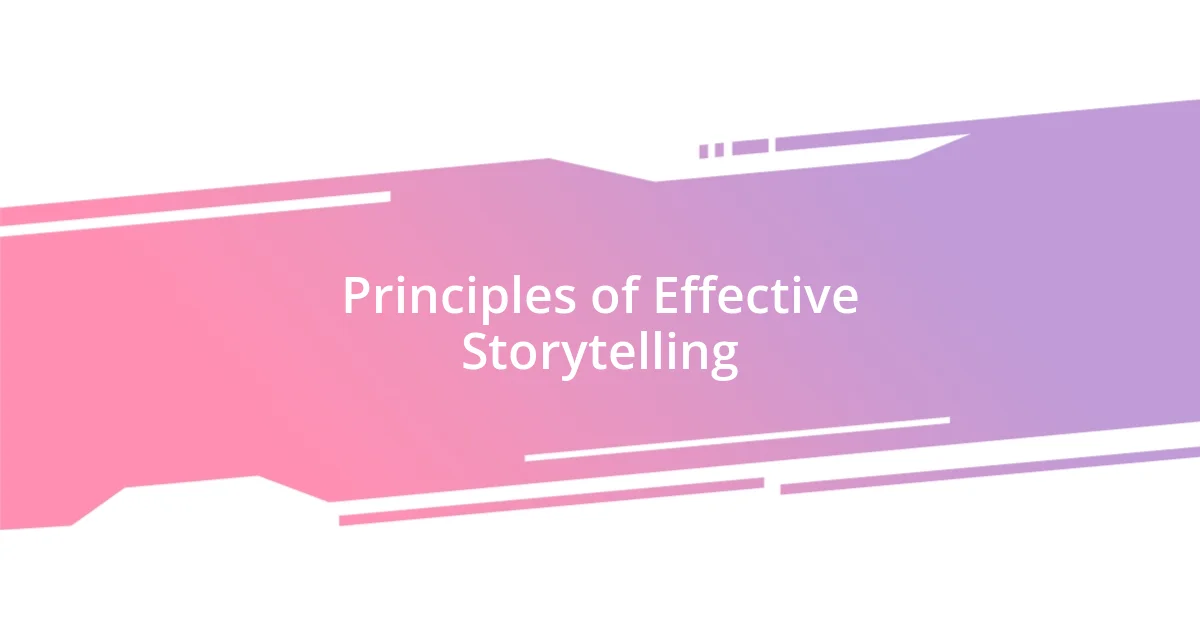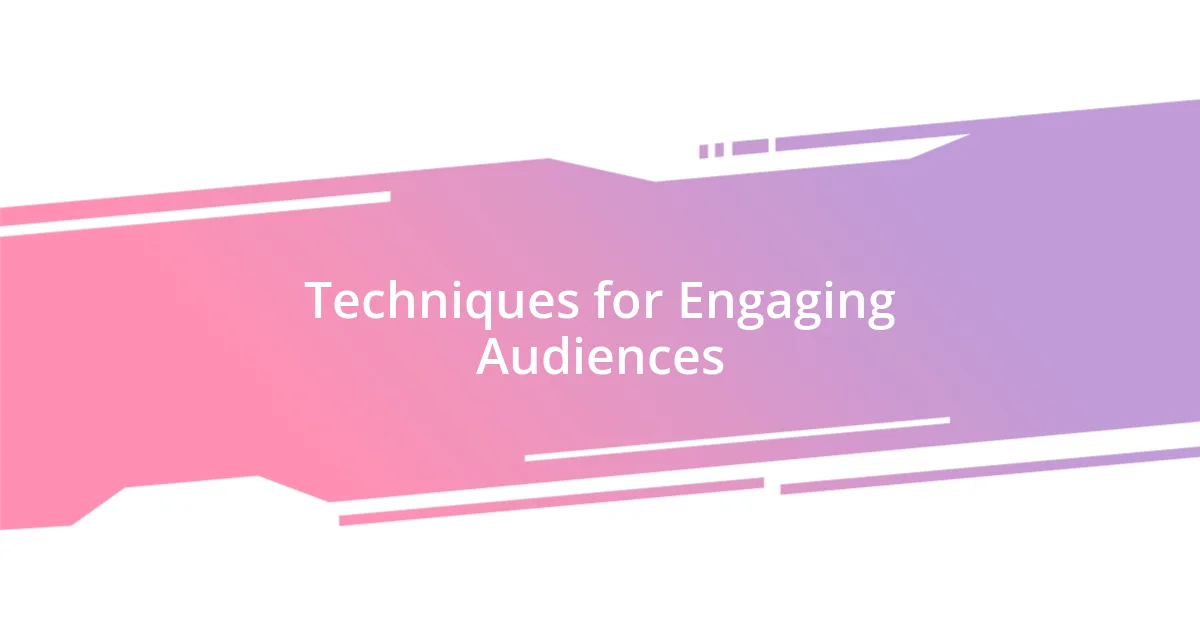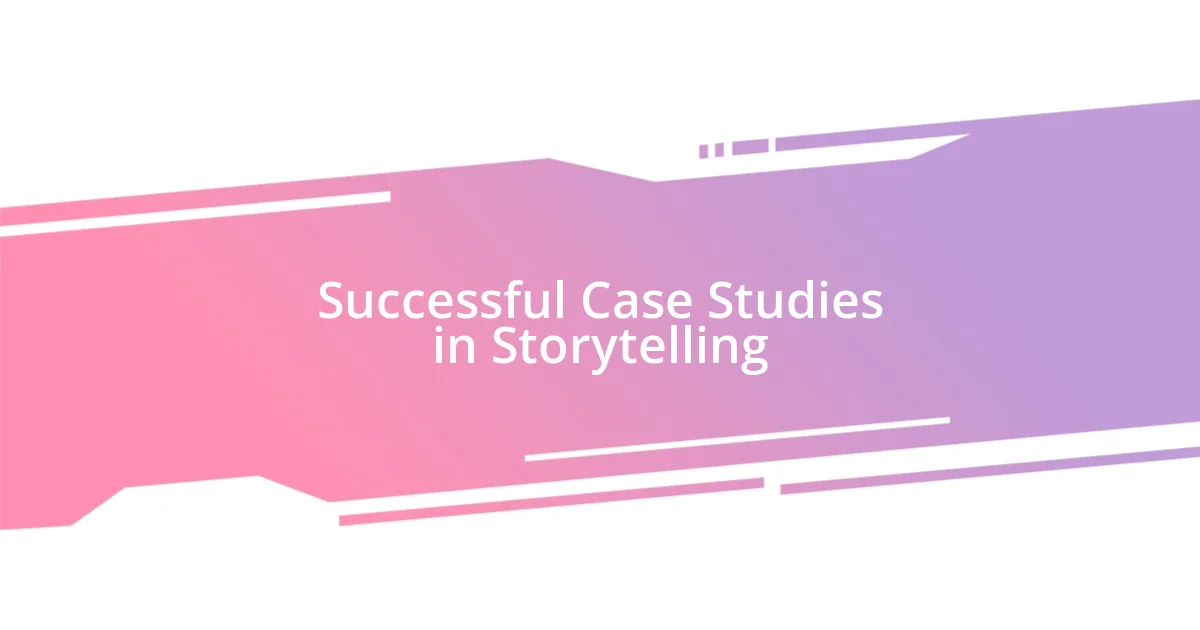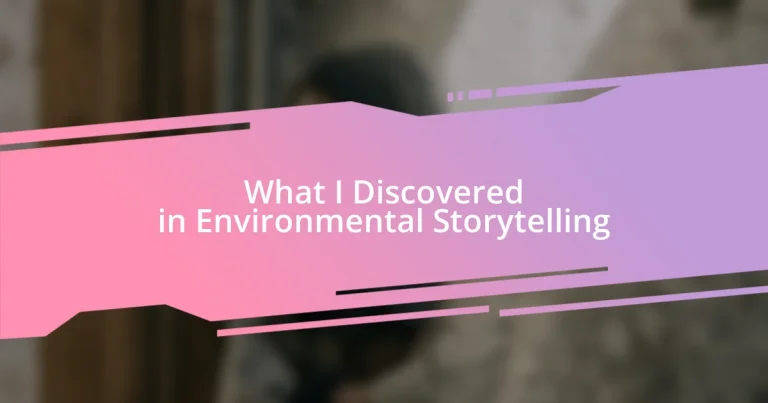Key takeaways:
- Environmental storytelling connects audiences emotionally to complex issues, making them relatable and inspiring action.
- Key principles include clarity, emotion, relatable characters, vivid imagery, and a strong call to action to enhance narrative impact.
- Future trends in environmental storytelling will focus on immersive technologies, collaborative narratives, and intersectionality to highlight diverse perspectives and community experiences.

Understanding Environmental Storytelling
Environmental storytelling is a powerful method that conveys complex environmental issues through narratives and visuals. I remember visiting a national park where each trailhead had signs that told the story of the land, highlighting its history and the species that depend on it. This approach transformed my understanding—why should we care about climate change if we can’t see its impact in our own surroundings?
I often find myself reflecting on how personal narratives can resonate deeply with audiences. For instance, during a community event, a local elder shared her childhood memories of a river that once flowed freely, now reduced to a trickle. Hearing her story reminded us of the collective loss and the urgency of protecting our natural spaces. Isn’t it fascinating how a single story can link generations and inspire action?
The essence of environmental storytelling lies in its ability to forge connections between people and the planet. It’s more than just facts; it’s about breathing life into statistics and making them relatable. Have you ever felt that jolt of realization when hearing a powerful story? That’s the magic of storytelling—capturing emotions that stir our sense of responsibility and urging us to take action.

Principles of Effective Storytelling
Effective storytelling is all about authenticity and connection. From my experience, crafting a narrative that feels genuine can bridge the gap between abstract facts and real-world impact. I remember attending a workshop where the speaker emphasized using a personal touch. She shared her journey of adopting a sustainable lifestyle and the small, life-changing decisions she made along the way. It struck me how her story inspired many in the room to reconsider their habits.
Here are some key principles to keep in mind for impactful storytelling:
- Clarity: Aim for straightforward messages that cut through noise. Make it easy for your audience to grasp the core idea.
- Emotion: Tap into feelings—fear, hope, or nostalgia. These emotions can drive empathy and inspire action.
- Character: Introduce relatable characters or figures. A good story allows people to see themselves in the narrative.
- Imagery: Use vivid imagery to paint a picture. I’ve found that evocative descriptions can transport the audience to the scene you’re trying to share.
- Call to Action: Conclude with a clear, inspiring call to action, urging the audience to make a change or reflect further on the topic.
These elements combined don’t just tell a story; they create a movement. It’s amazing how, with the right blend, one can transform facts into compelling narratives that resonate deeply.

Techniques for Engaging Audiences
Using various techniques to engage audiences is essential for effective environmental storytelling. One powerful method is incorporating visual elements. For instance, I once created a presentation that included striking images of deforested areas alongside infographics about biodiversity loss. This visual juxtaposition not only highlighted the urgency of the issue but also captivated my audience’s attention, prompting a deeper connection to the facts presented. Isn’t it amazing how a well-chosen image can evoke such strong feelings and motivate action?
Another technique is to leverage interactive storytelling. I had the opportunity to participate in a workshop that introduced us to a live polling tool, allowing the audience to share their thoughts in real-time. This approach transformed the session into a dynamic conversation, enabling attendees to voice their perspectives while tying their responses back to the environmental issues at hand. It made the discussion more relatable and personal. Have you ever been part of a dialogue where your opinion felt valued? It can be incredibly empowering!
Lastly, utilizing local narratives creates a sense of familiarity and urgency. On a recent hike, I overheard a group discussing the impact of pollution on a nearby river they frequented as kids. Their stories of lost fishing trips intertwined with their love for that river made the environmental issue incredibly tangible. By sharing local experiences, storytellers can elicit emotional responses, fostering a sense of community urgency to protect what matters to us.
| Technique | Description |
|---|---|
| Visual Elements | Using images or infographics to highlight issues and connect emotionally. |
| Interactive Storytelling | Engaging audiences through real-time polls and feedback during presentations. |
| Local Narratives | Sharing familiar stories that evoke a sense of community and urgency around environmental issues. |

Successful Case Studies in Storytelling
One standout case study in environmental storytelling that I often reflect on is the documentary Before the Flood, featuring Leonardo DiCaprio. The film’s blend of personal anecdotes and global observations struck me deeply—it wasn’t just statistics about climate change but various faces and places. I recall how one scene showed communities already suffering from rising sea levels. It made me wonder: how would it feel to lose your home to something as intangible as a gradual climate change? That emotional connection always lingers.
Another impressive example comes from a local project aimed at reducing plastic waste. The team organized a community-driven storytelling event where residents shared personal stories about how plastic pollution impacted their lives. Hearing heartfelt accounts from my neighbors reminded me of the power of voice. I couldn’t help but feel a sense of urgency. Isn’t it incredible how personal narratives can galvanize a community to push for change? By connecting the problem directly to people’s experiences, the initiative found immediate support for their cleanup programs.
I also think about the creative approach of National Geographic’s storytelling campaigns. They often weave together science, visuals, and personal journeys to engage viewers. One campaign I saw featured a young photographer documenting her expedition to rescue marine life affected by coral bleaching. The combination of her personal growth through this experience with vivid imagery captured my attention. It’s fascinating how a single story can inspire a broader movement. Have you ever felt motivated by someone’s journey? It truly shows how storytelling can ignite passion and action around critical environmental issues.

Tools for Crafting Environmental Narratives
When it comes to crafting environmental narratives, one tool that stands out for me is the use of sound. I once attended an outdoor workshop where we engaged participants with recordings of nature sounds—everything from rustling leaves to bird calls. The atmosphere transformed as everyone closed their eyes and immersed themselves in these sounds, making the environmental issues we discussed feel more real and urgent. Have you ever noticed how certain sounds can transport you to a specific place? This sensory experience can deepen emotional connections in storytelling.
Another valuable tool is incorporating storytelling frameworks like the hero’s journey. I’ve found that framing environmental stories through this lens, where individuals or communities face challenges and strive for solutions, allows the audience to visualize themselves as part of that journey. For example, I collaborated with a group focused on restoring a local wetlands area. By sharing personal stories of how volunteers became “environmental heroes,” we inspired other community members to join in. Isn’t it inspiring to think that each of us can contribute to significant change?
Lastly, the importance of data storytelling cannot be overstated. I once helped create a report that not only featured statistics on air quality but also paired these numbers with citizen testimonials about their health struggles. Presenting data alongside personal experiences made the statistics resonate on a human level. It’s remarkable how a few numbers can seem abstract, but when tied to real-life stories, they provoke reflection and action. Have you ever found yourself moved by a statistic that resonated with your personal journey? It underscores the power of combining facts with narratives.

Measuring Impact of Environmental Stories
Measuring the impact of environmental stories can be as nuanced as the stories themselves. I remember working on a community initiative that aimed to increase awareness about urban air quality. We followed up after our campaign, and the feedback we received was eye-opening. Participants shared how learning about the pollution levels led them to change their commuting habits—it was a small shift for each individual, but collectively, it made a considerable difference. How often do we underestimate the ripple effect of a single narrative?
One of the best ways to gauge impact is through audience engagement metrics. For instance, I once partnered on a project aiming to raise awareness about deforestation through social media storytelling. Tracking comments, shares, and reach showed us exactly how many people were resonating with the message. The numbers revealed an unexpected aspect: the most shared stories were those featuring personal testimonials. Isn’t it fascinating how emotional authenticity can sometimes triumph over straightforward facts?
Additionally, qualitative feedback can enrich our understanding of a story’s impact. After attending a workshop on ocean conservation, I asked participants to share their thoughts on the narratives presented. Many expressed feelings of hope and empowerment, which highlighted for me how stories can serve not just to inform, but to inspire action. I learned firsthand that even if we’re not always presented with hard data, the emotions stirred by heartfelt storytelling can lead to meaningful change. Have you ever left an event feeling determined to make a difference? That’s the power of effective storytelling in environmental advocacy.

Future Trends in Environmental Storytelling
As I look ahead to the future of environmental storytelling, I’m excited by the potential of immersive technologies, particularly virtual and augmented reality. I once tried a VR experience that simulated the effects of climate change, and it felt so real that it gave me chills. When viewers can step directly into a story—like watching a coral reef decline before their eyes—it creates a profound sense of urgency. Can virtual experiences be the catalyst that compels people to act?
Another trend I foresee is the rise of collaborative storytelling, where communities come together to share their narratives. During a recent community art project, we invited local residents to express their relationships with the environment through murals. Each artwork told a unique story, and the collective impact was powerful. It reminded me that when individuals share their experiences, they not only honor their own stories but also weave a rich tapestry of community experiences. Have you ever felt a deeper connection to your surroundings after hearing someone else’s story?
Lastly, I believe we will see a stronger emphasis on intersectionality in environmental storytelling. It’s crucial to highlight how environmental issues disproportionately affect marginalized communities. In one initiative I was part of, we conducted interviews with residents in a low-income area adversely affected by pollution. Hearing their struggles opened my eyes to the urgent need for inclusive narratives. Don’t you think every story deserves to be told, especially those that shine a light on the voices often silenced? By embracing diverse perspectives, we can create a more holistic understanding of environmental challenges.














